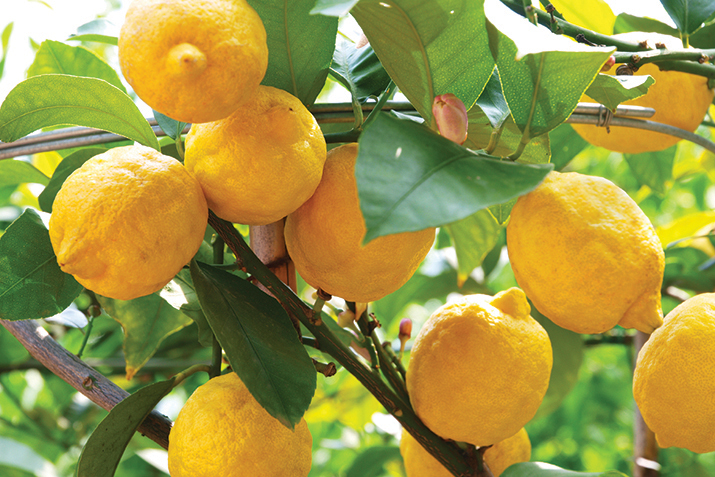
You’ve probably heard about the California Gold Rush of 1849, when prospectors flocked to the West Coast to seek their fortune in gold from the California hills. What you might not have heard is that gold wasn’t the only yellow thing they wanted. Lemons were a hot commodity for miners at that time because of their ability to prevent scurvy, a potentially fatal disease brought on by lack of vitamins and minerals from fresh foods. Miners looking to spend a long time away from town would pay about $1 for a lemon back then, which in 2013 (adjusted for inflation) is the equivalent of $30!
Today lemons are common and inexpensive to purchase, but no less valuable. The high vitamin C content of lemons has been prized throughout history for its ability to support the production of white blood cells, our body’s natural defense against disease. In lemons, the vitamin C comes in the form of citric acid, which also has natural antibacterial properties. Rubbing your cutting boards or scouring your sink with half a lemon is a great way to naturally disinfect and deodorize food surfaces in the kitchen. The amount of citric acid in a lemon is even able to conduct a mellow electrical current, enough to power a small light bulb (see lemon battery for a fun at-home experiment).
The realm of cooking is where lemons are truly invaluable. Lemon juice adds a bright, mild-flavored astringency to foods, more subtle and neutral than vinegar. A squeeze of lemon just before serving many savory foods, from roasted potatoes to stir fries, contributes vibrancy and perks up flavors without masking them. A perfect ingredient in marinades for meats, seafood, and fish, lemon juice tenderizes and infuses proteins, as in this delicious recipe for Lemon and Dill Salmon Kebabs or Lemon Garlic Chicken. Lemon also adds dimension to sauces and salsas, as in a traditional Hollandaise sauce, or this fresh, zippy Greek-style Cucumber Salsa with Feta. Whip up a batch and serve with warm pita bread for a tasty alternative to chips and dip. Lemon vinaigrette is one of the most versatile dressings there is and can be used to dress nearly any vegetable, from asparagus to zucchini.
Lemon is used differently in different parts of the world. In Italy, the zest and juice of the lemon is often used in pasta sauces or salad dressings, as in this easy Artichoke Parmesan Pasta dish. In Northern Africa, preserved lemon (lemon cured in salt) is a common ingredient in tagines and couscous. In India, a popular condiment called lemon pickle is made by fermenting lemon peels and juice in spices for weeks until tender and aromatic; then it’s eaten with rice, naan, or curry.
Of course, lemon is also at home in baked goods—you can find lemon versions of cookies, cakes, pies, candies, mousse, even soufflé. But perhaps the easiest, most beloved lemon dessert is the humble Lemon Bar, with its bright, tart punch and sweet, buttery finish. Lemon zest also infuses quick breads with great flavor and pairs well with a variety of fruits. Try these Lemon Raspberry Muffins for a quick, delicious brunch or breakfast treat.
When shopping for lemons, look for uniformly yellow fruits that are heavy for their size, and note that thin-skinned lemons will be juicier than those with thick skins. If you’re planning to use the zest, consider purchasing organic lemons, as conventional lemons are sometimes waxed to preserve freshness. Lemons used for zest should always be scrubbed well before use, and even if a recipe just calls for juice, consider zesting your lemons anyway, and seal the zest in a freezer bag to use later. If juicing lemons for a recipe, a good reference is that an average (medium) lemon contains approximately 3 tablespoons of juice.
This article originally appeared on the Co+op Stronger Together website: www.strongertogether.coop/fresh-from-the-source/lemons





